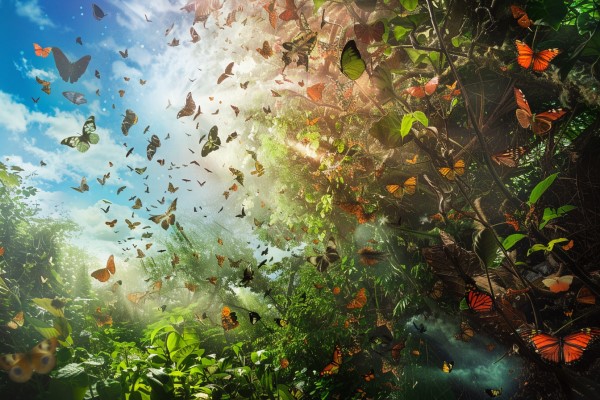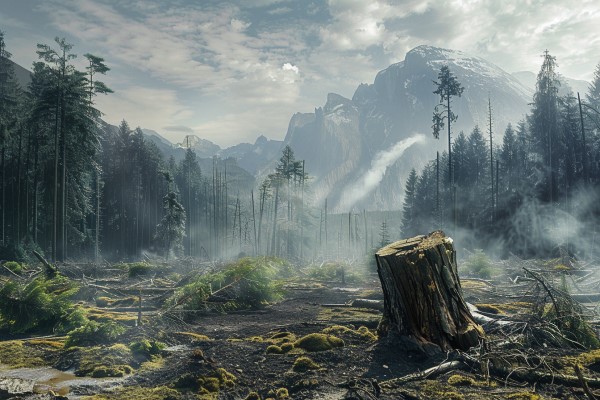KidZone Habitats
Ecosystems and Biodiversity
After exploring the fascinating world of habitats, it's time to dive deeper into the interconnected realms of ecosystems and the vital role of biodiversity within them. This advanced section will help us understand how habitats are integral parts of larger ecosystems and why every plant, animal, and microorganism plays a crucial role in maintaining the health and stability of our planet.
What is an Ecosystem?
An ecosystem is a complex network of living organisms (plants, animals, and microbes) interacting with each other and their physical environment (air, water, soil). Unlike a habitat, which focuses on a specific environment for certain species, an ecosystem includes the interactions between multiple habitats and the organisms that inhabit them, creating a dynamic and interconnected system.

The Role of Biodiversity
Biodiversity refers to the variety of life in a particular ecosystem or on the entire planet. It encompasses the diversity of species, genetic variations within species, and the variety of ecosystems themselves. High biodiversity is a sign of a healthy ecosystem, as it allows for complex interactions and provides a buffer against environmental changes.
Importance of Ecosystems and Biodiversity
- Supporting Life: Ecosystems provide essential services like clean air, fresh water, and fertile soil, which are foundational for life on Earth, including human life.
- Resilience and Stability: Diverse ecosystems are more resilient to disturbances (like natural disasters or human impacts) and can maintain stability over time. This resilience is crucial for adapting to changes, including those brought about by climate change.
- Natural Resources: Ecosystems supply a wealth of natural resources such as food, medicines, and materials that humans rely on for survival and development.
- Cultural and Educational Value: Ecosystems and their biodiversity have immense cultural significance and offer endless opportunities for learning, recreation, and inspiration.
Threats to Ecosystems and Biodiversity
Ecosystems and their biodiversity face numerous threats, primarily from human activities. Habitat destruction, pollution, climate change, overexploitation of resources, and the introduction of invasive species can all lead to a decline in biodiversity and the degradation of ecosystems.

The Role of Conservation
Conservation efforts aim to protect and restore ecosystems and their biodiversity. By preserving natural habitats, enforcing sustainable practices, and educating the public about the importance of biodiversity, we can help ensure the health and longevity of our planet's ecosystems.

Activities and Exploration
To help young learners understand these concepts, consider incorporating activities such as:
- Biodiversity Scavenger Hunts: Encourage children to find a variety of plants and animals in a local park or garden, noting the different species and their roles in the ecosystem.
- Ecosystem Models: Create models of ecosystems using recycled materials, highlighting the different components (biotic and abiotic) and their interactions.
- Conservation Projects: Participate in local conservation projects, such as tree planting or beach clean-ups, to directly contribute to ecosystem health.
By understanding ecosystems and biodiversity, children can appreciate the intricate connections that sustain life on Earth and recognize the importance of every organism, no matter how small, in maintaining the balance and beauty of our natural world.
Advanced Information About Habitats >
Other links you might enjoy:
- DLTK's Animal Activities (crafts, coloring, recipes and more)
- Animal Coloring Pages - includes different plant and animal species